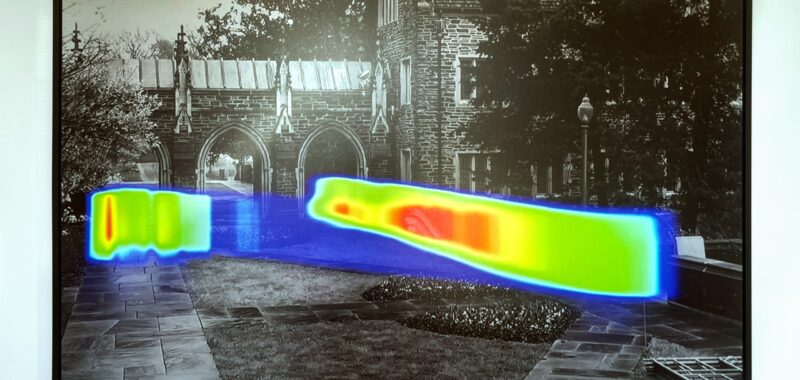
LOS ANGELES — Invisibility: Powers & Perils at Oxy Arts at Occidental College looks at the consequences of that which cannot be seen. Curator Yael Lipschutz brings in an eclectic range of artists in this examination: a first edition of Ralph Ellison’s Invisible Man (1952) and a two-channel video projection by Sondra Perry that consider invisibility’s role on Black identity; a cluster of works dealing with technology, including encryption, data, and deepfakes; and bespoke scents by Katie Paterson and taxidermied bird specimens that confront the looming future of invisibility via extinction in the natural world.
Though each of these works is strong, as a collection, the show ping-pongs from one theme to another, breaking up a cohesive message. Based on the gallery’s layout, for instance, the first work a visitor will likely encounter is Invisible Man, which is protected in a vitrine and mounted above a vintage spread from Life magazine that pairs promotion of the book with haunting portraits and assemblages by famed photographer Gordon Parks. This suggests that the show might center Blackness. Yet the rest of the artworks in this first section turn toward subjects as diverse as radiation, black holes, data, and artificial intelligence, none of which were created by Black artists.
The work of the two Black artists in the 13-person show is housed in the larger section of the gallery. Tavares Strachan’s “The Encyclopedia of Invisibility” (2018), a 2400-page tome dedicated to intangible sensations and overlooked histories, is poignantly displaying the entry for Palestine, and because the book is protected behind glass, no one can erase its existence. Behind the book, in its own nook, is Sondra Perry’s “Double Quadruple Negative Etcetera I & II” (2013), a two-channel video installation in which two dancers flail about, an AI-driven tool rendering them a fast-changing patchwork of drywall. All that identifies them as Black is their hair texture and the occasional blurred forehead, a rare instance in which big tech is used to protect rather than exploit.

Another captivating two-channel video that leverages AI is an excerpt from “Soft Evidence” (2021) by the art collective Operator (Ania Catherine and Dejha Ti), which shows the same woman in different settings. In one channel, she’s reading a newspaper in an eerie drycleaning shop. In the other, the woman stares blankly at the screen. “That’s not me,” she says in a monotone, seemingly referring to the fact that she doesn’t actually exist: The entire film is quite convincingly deepfaked.
While such critiques on technology dominate much of this exhibition, as it’s part of the Getty PST: Art and Science Collide initiative, a few works confront the climate crisis. In “To Burn, Forest, Fire” (2021), consisting of two bespoke incense sticks, one made with traces of liverwort, quartz sandstone, and ferns, Paterson calls attention to endangered ecosystems by imagining the smells of the Cairo Forest, the world’s first forest, now a collection of 385-million-year-old fossils in New York’s Hudson Valley. The other stick smells like the mossy and endangered Amazon rainforest, warning us that it might soon suffer the same fate as its predecessor.
Invisibility feels like a brainstorming session, with nodes sprouting from a central theme. But I wanted to see a thousand more thought bubbles in the form of artworks tacked onto each concept to more fully flesh it out. This show raises exciting questions around racial, technological, and ecological invisibility, and leaves us asking for more.


Invisibility: Powers & Perils, part of Getty’s PST ART: Art & Science Collide initiative, continues at Oxy Arts at Occidental College (4757 York Boulevard, Los Angeles) through February 22. The exhibition was curated by Yael Lipschutz.

